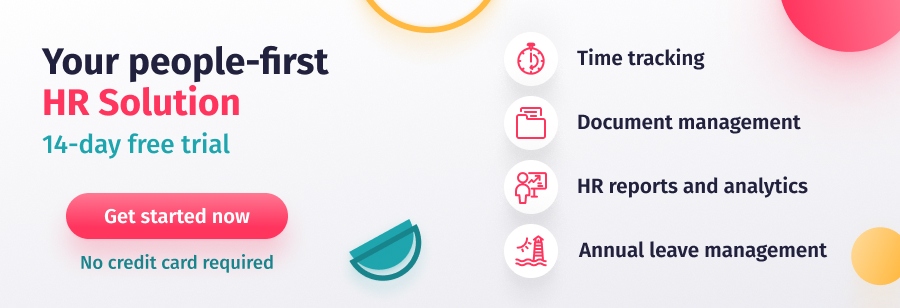Ensuring diversity at work is a moral imperative. However, there’s also a strong business case for creating an inclusive environment at your company.
In this article, we’ll explore the barriers to diversity and the benefits of safeguarding it to create a truly diverse workplace.
What is Diversity?
Diversity refers to the differences between people, usually related to race, ethnicity, gender, sexual orientation, age, religion, physical ability, or socioeconomic status.
What is Inclusion?
Inclusion is creating a work or social environment where everyone feels valued, respected, and supported. It means actively working to create a sense of belonging for all group members, regardless of their differences. Inclusion takes diversity a step further and is about creating a culture that recognises and values diversity and promotes equity and fairness.
What is Diversity Management?
Diversity management can be defined as the multitude of management aspects and measures that relate to the recognition and benefits of diversity in companies. In doing so, social, economic and political factors (the employee) are considered. These can be divided into two groups:
Internal factors
- gender, age, ethnic origin, education, religion, beliefs, sexual orientation, disability…
External factors
- income, marital status, geographical location, parenting, education, work experience, habits, leisure behaviour…
Acceptance, mutual respect, and the promotion of equal opportunities are always in the foreground. Diversity management is a sub-area of HR management to identify success-relevant aspects of diversity in companies and exploit the benefits of different competencies, characteristics, attitudes and cultural backgrounds.
What is Their Role in the Workplace?
Diversity in the workplace means creating an environment that is inclusive and respectful of everyone within your teams.
It’s essential to remember diversity is active. It’s not enough to have diverse policies if you don’t go out and actively hire and retain diverse talent from different backgrounds and then ensure that they have equal opportunities to develop and progress within the business.
This is where inclusion comes in. Inclusion means fostering a work environment where everyone feels welcome and can contribute their unique talents and perspectives. It’s embracing authenticity and ensuring people feel comfortable bringing their whole selves to work without fear of discrimination or bias.
Again, fostering an inclusive workplace happens in collaboration. It takes a combination of initiatives and buy-in from your entire business to help it flourish. Here are a few places to start:
· Fair and equitable policies and procedures
· Equal access to training
· Educating employees on diversity and inclusion
· Promote open communication
· Encourage collaboration
· Actively seek out diverse perspectives in decision-making processes.

Equality Act 2010
The Equality Act of 2010 provides a legal framework to protect the rights of individuals and advance equal opportunity for all. It covers everyone in the UK from being discriminated against, harassed, or victimised and promotes a fair and equal society. The characteristics protected under the Equality Act 2010 are:
· Age.
· Disability.
· Gender reassignment.
· Marriage and civil partnership.
· Pregnancy and maternity.
· Race.
· Religion and belief.
· Sex.
· Sexual orientation.
What are the Barriers to Equality and Diversity in the Workplace?
Despite considerable advances in the diversity and inclusion space, particularly in recent years, several barriers still need to be overcome. This list is not exhaustive, but it will help you start thinking about what might exist in your workplace.
Unconscious Bias
Unconscious bias or implicit bias is a big one to overcome, mainly because it is by its very nature ‘unconscious.’ Without proper awareness and when left unchecked, bias can deeply infiltrate an organisation and become a barrier to creating an inclusive environment.
Unconscious bias describes the attitudes and stereotypes we hold outside our conscious awareness. It usually refers to social categories like race, gender, or disability and the judgments we make without even realising that we’re making them. It can be particularly influential in the workplace during the hiring process when hiring managers unknowingly gravitate towards preference in hiring decisions. Even when this preferential treatment is minor, it can make a significant impact, and teams can end up being made up entirely of people from similar backgrounds or experiences.
Tackling unconscious bias starts with becoming aware of it. Some of the ways to overcome it include:
· Making considered decisions. Unconscious bias is more likely to occur when you make quick, spur-of-the-moment decisions.
· Think about your behaviour. Check yourself, examine why you might have made a particular decision, and reflect on whether there might have been unconscious bias at play. If you’re a hiring manager, have you shown preferential treatment to someone because they share the same likes and dislikes or have a similar educational background to you? Has this stopped you employing diverse talent?
· Pay particular attention when making decisions around protected characteristics.
· Build your cultural competence by spending time with people from diverse backgrounds.
· Encourage policies that ensure things are fair, like rotating the minute taker in meetings and stopping people from interrupting each other.
· Speak out if you notice bias.
· If you get it wrong, say sorry, learn from it, and encourage others to do the same.

Lack of Diversity in the Leadership Team
A lack of diversity in the leadership team means that the decision-makers might only reflect some of the needs of their employees. A leader with no religious background might not consider whether the businesses leave policy fulfils the requirements of a team member from a particular religious group.
This might also happen if a leadership team without any disability representation signed off on a design for a new office kitchen. Sheryl Sandberg, COO of Facebook, described her experience when she was pregnant at Google in her book Lean In. The male leaders hadn’t considered the need for parking close to the building simply because they had never been pregnant. As soon as she highlighted the issue, it was quickly addressed, but it arose because of a lack of gender diversity in leadership. The male leaders hadn’t considered the need for parking close to the building simply because they had never been pregnant.
The draw-a-scientist or DAST study also shows us why it is so important to have diverse leadership. When the study was conducted over 50 years ago in a school in the United States, only 0.06% of the 5,000 students drew a female scientist. When the study was repeated in 2018, 24% drew a female scientist. The study highlights the existence of entrenched restrictive gender role stereotypes and how important it is for women to have female role models – particularly in industries traditionally dominated by men.
Unfortunately, it can take time to make changes at the top to promote an inclusive culture unless you’re lucky enough to have a diverse leadership team already. There are lots of ways to ensure your leadership team is actively promoting inclusivity, however:
· Promote equal pay.
· Mix up your teams.
· Get another perspective.
· Encourage employee resource groups.
· Get feedback and track progress.
· Hold yourself and your leadership team to account.
Inadequate Policies
Building inclusion into the framework of your business starts with policy. Without robust, inclusive policies, issues like lack of diversity in recruitment, discrimination, and unfair access to training will go unchecked and inhibit inclusive workplace culture.
Increasingly, inclusive policies aren’t just integral for creating a culture of equity and belonging, but client standards and tender processes involve the assurance of the ethical operation of their suppliers.
To get you started, we’ve put together ten policies to help you build the foundations of your own diversity and inclusion programme:
1. Diversity & Inclusion Policy.
2. Recruitment & Selection Policy.
4. Work-Life Policy.
5. Code of Conduct.
6. Dignity at Work or Bullying, Harassment & Discrimination Policy.
7. Disability & Reasonable Adjustments Policy.
8. Trans-inclusion Policy.
9. Whistleblowing Policy.
10. Mental Health, Well-being & Menopause Policy.

What are the Benefits of a Diverse and Inclusive Workplace?
1) Increased innovation and creativity
When people from different backgrounds and experiences come together, it creates a beautiful melting pot of diverse perspectives, thoughts, and ideas. This leads to challenging assumptions and preconceptions, pushing each other to think outside the box, and developing ideas in novel and creative ways, leading to the holy grail: innovation.
Juliet Bourke quantifies this in her book ‘Which Two Heads Are Better Than One? How Diverse Teams Create Breakthrough Ideas and Make Smarter Decisions‘. She highlights the value of diverse thinking and how this constituted a 20% increase in innovation and a 30% reduction in risk.
Diversity also appears to have a fascinating effect on group dynamics, with racial diversity stimulating curiosity and gender diversity encouraging groups to take turns speaking.
2) Improved decision-making
In the same way, inclusive culture can lead to better decision-making. A wide range of perspectives and experiences cover more bases and can help identify blind spots and biases that may go unnoticed.
Forbes found that diverse companies make better decisions 87% of the time when they studied 600 business decisions made by 200 different business teams in a range of companies over two years. The research showed that teams with inclusive processes made decisions twice as fast and with half as many meetings and delivered 60% better results for the decisions they made.
3) Enhanced reputation
Companies that prioritise diversity and inclusion enhance their reputation and brand, attracting customers and investors who value these principles. As far back as 2017, 50% of customers reported making decisions based on companies’ support of equality.
And it’s not just customers; jobseekers are even willing to pursue jobs with lower salaries to work in businesses they see as more diverse.
4) Improved employee engagement and retention
As well as a formal employment contract, a psychological contract is at play amongst your teams. It covers expectations, beliefs, ambitions, and obligations as perceived by the employer and the individual. Research on the psychological contract shows that people want to work for employers with good employment practices, and they also want to feel valued at work.
Creating a sense of belonging for everyone and hiring diverse employees helps staff feel valued and included, making them more likely to be engaged and committed to their work, leading to lower turnover rates and higher productivity – so much so that companies with higher diversity levels also have 22% lower turnover rates.
5) Increased profitability
Studies have shown that companies with diverse workforces are more likely to be profitable than those with less diversity. A Great Place to Work’s Recession Report assessed hundreds of S&P 500 companies in the United States during and after the recession in 2009 and found that, although there was an overall 35.5% decline in stock performance between 2007 and 2009, those companies that remained diverse and inclusive reported 14.4% gains.
Plus, McKinsey looked at 366 public companies worldwide and found companies in the top quartile for racial and ethnic diversity and gender were 35% and 15% more likely to have financial returns above their respective national industry medians, respectively.
It’s hard to ignore the impact of workforce diversity on a company’s bottom line!
How to Implement Workplace Diversity Management
The majority of companies believe that workplace diversity is something that can be measured. They mainly do this with the help of personal interviews. But what makes successful diversity management? Many companies do not know how and where to start first. In the following, we show you which steps to ensure successful workplace diversity management.
Defining goals
First, the company should think about what a diverse corporate culture might look like in their organisation and how to support the achievement of business goals simultaneously.
Determine the actual state
Basic conditions and prerequisites should be analysed here. The Diversity Charter suggests that a company should first answer the following questions.
- Who is employed in the company, and which qualifications are still missing to achieve the company’s goals?
- What conditions must be met so that the workforce can and wants to develop its potential optimally?
- How well are the basic conditions fulfilled?
- What needs to change in the company to meet the missing prerequisites?
Establish actions
The next step should be identifying actions each employee can use to achieve workplace diversity goals. At the same time, a time frame and available human and financial resources should be defined. These measures would be conceivable, for example, intercultural workshops, Employee tandems, a corporate calendar that records the holidays of all represented cultures/religions, Etc.
Implement measures
Before the practical implementation, all team members should be aware of the measures so that as many participants as possible can be involved in the process. In addition, uncertainties, misunderstandings and resistance can be detected and eliminated early.
Measuring success
Whether diversity management is successful can be measured by various key figures, i.e., on staff turnover, turnover, market share or sick leave of employees. In addition, employee surveys and discussion questions can be used to determine whether the company is aware of diversity.




